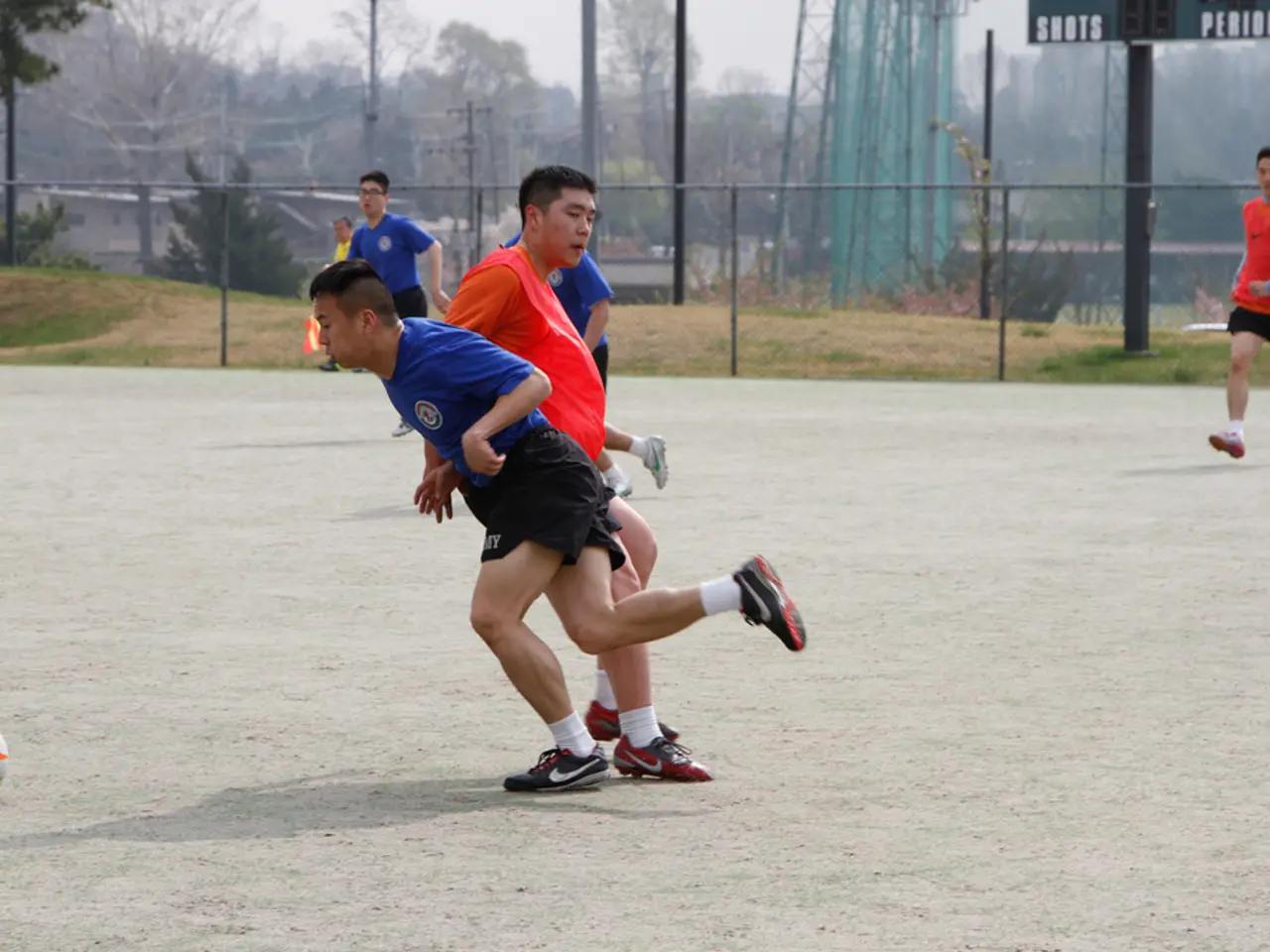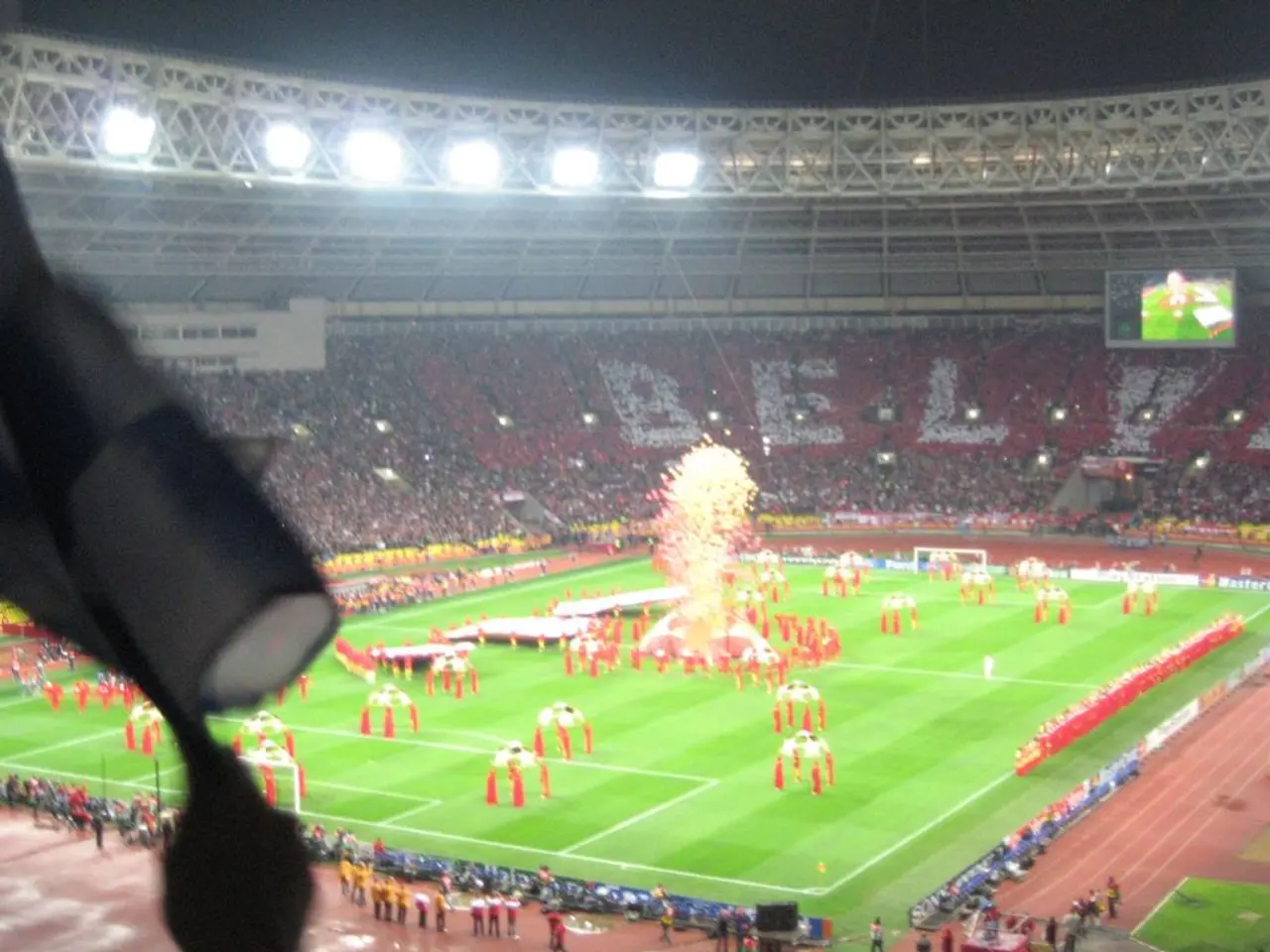Functioning of American Football
American football is a fast-paced, strategic game played by three teams: the players, the coaches, and the officiating crew. The game is played on a rectangular field, 120 yards long and 53 yards, 1 foot wide, with a goal line, end lines, and yard lines marked with hash marks.
Offensive Positions and Movements
The quarterback (QB) lines up behind the center and is responsible for receiving the snap. They can either hand the ball off to a running back (RB) or throw a pass to a wide receiver (WR). The offensive line, including the center, guards, and tackles, block for the quarterback and running back.
After a huddle or shift, all offensive players must come to a complete stop and remain stationary for at least one second before the snap. Ends and backs can be in motion before the snap.
Defensive Positions and Movements
Defensive players include defensive linemen (DL), linebackers (LB), and defensive backs (DB). Defensive linemen line up opposite the offensive line and attempt to rush the quarterback or stop the run. Linebackers support both the defensive line and the defensive backs. Defensive backs cover receivers and provide deep field support.
Defensive players, except for the nose tackle in some formations, cannot align directly over the center. Teams can have a maximum of 5 players on the line of scrimmage before the snap.
Scoring
A touchdown (6 points) is scored when a player carries or catches the ball into the end zone. After a touchdown, teams can attempt a point after touchdown (PAT) or a two-point conversion. A field goal (3 points) is scored when a team kicks the ball through the opponent's goalposts during a drive. A safety (2 points) is awarded when a player is tackled in their own end zone, or when a penalty occurs in the end zone.
Techniques and Strategies
Blocking, rushing, and passing are key techniques used by the offense to advance the ball down the field. Defensive strategies include blitzing, man-to-man coverage, and zone coverage. Teams often adjust their strategy based on the score, field position, and game clock, especially in crucial situations.
Overtime Rules
In overtime, each team gets a possession from the opponent's 10-yard line. The first possession is determined by a coin toss. If the defense gains possession, the play ends without the offense continuing their downs.
Challenges and Reviews
When a play is challenged, the referee has 90 seconds to review the play at a field-level monitor to the side of the field. A team has two challenges per game. If the team loses the challenge, it loses a time-out and the official's call stands. If a team wins the challenge, it retains its time-out and the official's call is overruled.
Other Rules and Techniques
The football consists of an inflated, polyurethane bladder covered in cowhide and laced with gridcord material. Pylons are placed at the ends of the end lines and goal lines. The nose of the ball must reach the bar connected to the end of the chain for a team to be awarded a first down.
In the NFL, there are many rules, some of which include clipping, chop block, encroachment, excessive crowd noise, fair catch, intentional grounding, leaping rule, tuck rule, "Emmitt Smith" helmet rule, illegal passes, quarterback incomplete forward pass or fumble, runner rule down by contact, touching of a kick, number of players on the field, and more.
In a modern NFL game, there are as many as 20 cameras covering the fast-paced action of a game. The NFL added an instant replay system to back up the officials in 1999.
Each team is allotted a roster of no more than 53 players, with only 11 players allowed on the field at a time. The defensive team stops the offensive team from getting 10 yards in three downs, and the offensive team free-kicks, or punts, the ball to the other team on third down. If the defensive team recovers a ball dropped by the other team (fumble) or picks off a ball thrown by the other team's quarterback (interception), they gain possession of the ball.
American football is a complex game with a rich history and numerous rules and techniques. Understanding these fundamental aspects can help both players and fans appreciate the strategy and skill involved in this exciting sport.
In this complex sport of American football, the quarterback primarily controls offensive strategies by either handing the ball to a running back or throwing a pass to a wide receiver. Meanwhile, defensive players such as defensive linemen, linebackers, and defensive backs work together to disrupt these offensive movements.
Football enthusiasts can witness the intensity of strategies like blitzing, man-to-man coverage, and zone coverage on the defense, and blocking, rushing, and passing on the offense, as they compete to advance the ball down the field in an attempt to score touchdowns, field goals, or accumulate saferies.







